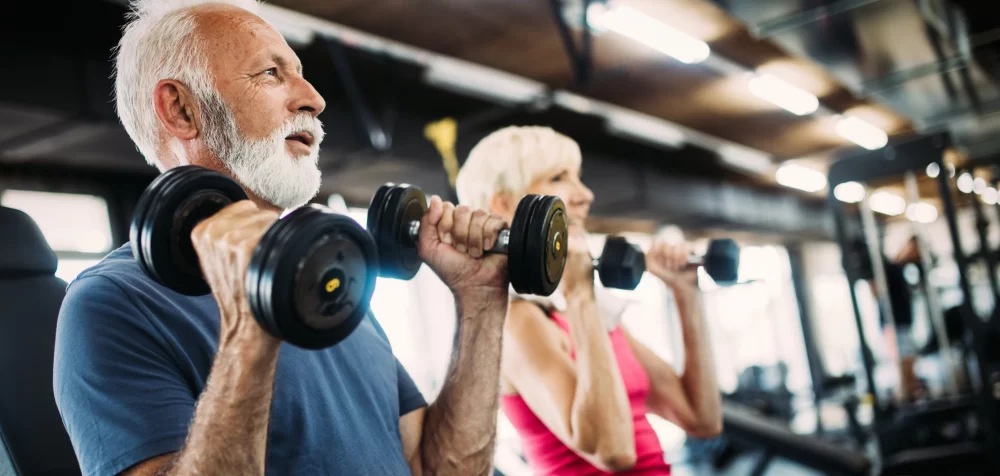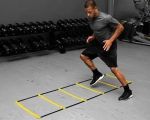
Understanding the Impact of Aging on Fitness: How to Stay Fit as You Age
As we age, it’s natural for our bodies to go through various changes. These changes can significantly impact our fitness levels, muscle mass, joint health, and overall mobility. But aging doesn't mean we have to slow down or accept a decline in our physical fitness. In fact, staying active and maintaining a fitness routine as we get older is one of the best ways to combat the effects of aging and enhance our quality of life.
The Aging Process and Physical Fitness
It’s not uncommon to hear people say, “I’m getting older, I can’t do what I used to do.” But this doesn’t have to be the case. While aging certainly brings changes, it doesn’t necessarily equate to a loss of vitality. The primary impact of aging on fitness is that it often involves a gradual loss of muscle mass, flexibility, and bone density. These physical changes are driven by factors like hormonal shifts, reduced physical activity, and lifestyle choices.
One key aspect of aging is the loss of muscle mass, a condition known as sarcopenia. After the age of 30, we begin to lose muscle at a rate of about 3–8% per decade. This process speeds up after the age of 60, and it can make daily activities more difficult. But don’t worry—strength training can help combat sarcopenia and preserve muscle mass well into our later years.
Adapting Your Fitness Routine as You Age
When we are young, we may have the freedom to push our bodies to the limit, but as we age, our fitness routines need to evolve. The focus should shift towards exercises that promote strength, flexibility, and cardiovascular health, rather than high-impact or overly strenuous activities.
For example, strength training is one of the most effective ways to maintain muscle mass and bone density as we age. Incorporating weightlifting or resistance training 2-3 times a week can significantly help in improving muscle tone, metabolism, and strength. However, it's important to start with manageable weights and progressively increase the intensity to avoid injury.
Joint Health and Flexibility: Why They Matter
Joint health is another critical aspect of fitness that changes with age. Many older adults experience joint pain, arthritis, or stiffness that can make moving and exercising more difficult. To improve joint flexibility and reduce pain, it’s crucial to engage in stretching exercises and low-impact activities such as swimming, walking, or cycling. Yoga is also a great option for older adults because it enhances flexibility, balance, and strength—all essential components for maintaining mobility as we age.
Furthermore, adding balance exercises to your routine is vital as balance tends to decline with age. This can be as simple as standing on one foot for 30 seconds or practicing stability ball exercises. Improving balance can prevent falls, which is a common concern for seniors, and can make everyday tasks like walking and climbing stairs feel more secure.
Cardiovascular Health: Keeping Your Heart Strong
Cardiovascular health should also be a priority as we age. Aerobic exercises such as walking, cycling, and swimming help improve heart health, lung capacity, and endurance. Regular aerobic activity can lower the risk of chronic diseases like heart disease, diabetes, and high blood pressure, which become more prevalent with age. Aim for at least 150 minutes of moderate-intensity aerobic activity per week, or 75 minutes of vigorous activity.
Don’t feel pressured to run marathons or engage in intense cardio. A brisk walk around the block or an enjoyable swim can have just as many benefits as more strenuous exercises, as long as they’re done consistently.
Practical Tips for Staying Fit at Any Age
When it comes to aging and fitness, it’s important to listen to your body and adjust your workouts accordingly. Here are a few practical tips to help you stay active as you age:
- Start with low-impact exercises and gradually increase the intensity. Walking, cycling, and swimming are excellent options for easing into a fitness routine.
- Incorporate strength training exercises at least twice a week. Use dumbbells, resistance bands, or bodyweight exercises to maintain muscle strength and prevent the loss of bone density.
- Include balance and flexibility exercises in your routine. Try yoga, Pilates, or tai chi to improve coordination and reduce the risk of falls.
- Stay consistent. Even if you can't commit to long workouts, try to move every day. Short, frequent bouts of exercise can add up to significant benefits.
- Consult with a healthcare professional or personal trainer who specializes in senior fitness. They can help you create a safe and effective fitness plan tailored to your needs and abilities.
Real-Life Success Story: Staying Fit in Your 60s and Beyond
I have a friend, Sarah, who is in her early 60s and has always been an advocate for staying active. A few years ago, she noticed she was feeling more fatigued and that her joints were starting to hurt after her usual workouts. At first, she was frustrated, but instead of giving up, she adjusted her routine. She added more stretching, yoga, and low-impact cardio into her schedule. Over time, Sarah found that she felt stronger and more energized, even with her modified fitness plan. She now lifts weights three times a week and takes long walks on her rest days.
Her story is a great example of how we can maintain our fitness, no matter our age. Sarah didn’t give up, and neither should you! Age may affect our bodies, but with the right approach, we can continue to live healthy, active lives.
Remember, aging doesn’t mean you have to lose your strength or vitality. By adapting your fitness routine to suit your changing body, you can keep enjoying a high quality of life as you age. So, start small, stay consistent, and make movement a part of your daily life—your body will thank you for it!








